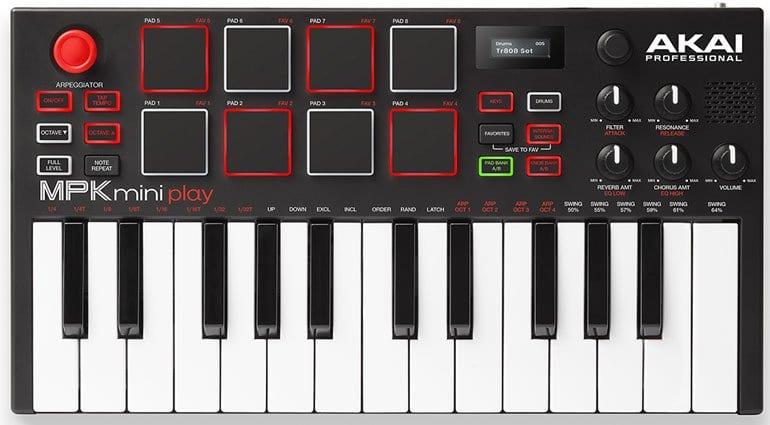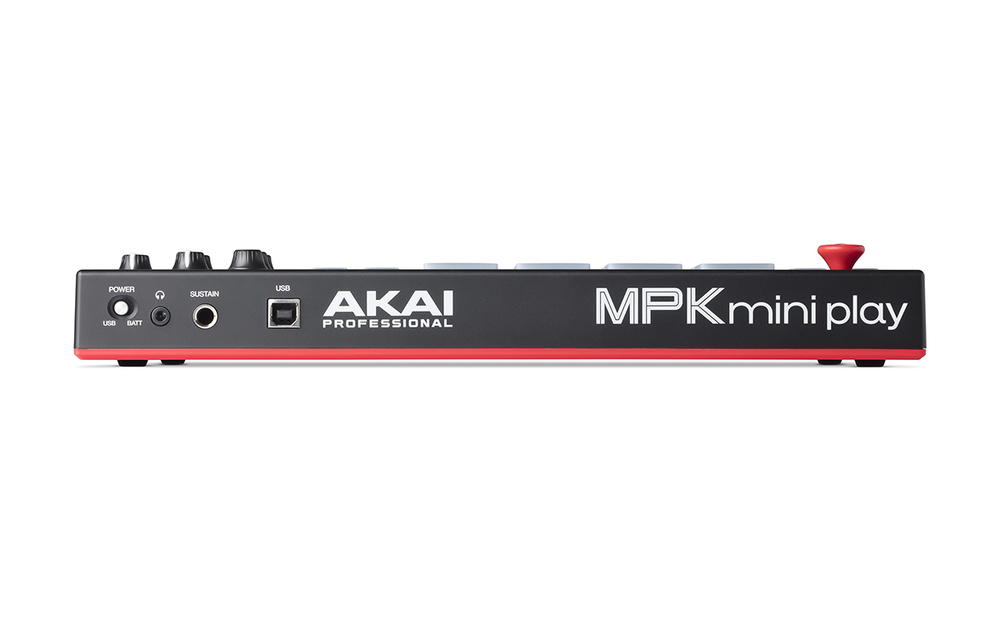

#Mpk miniplay full#
This of course has an impact on the unit’s physical size – the MPK Mini will happily slot into a 13” laptop bag, whereas you might struggle to achieve this with the MiniLab, which is a full 40mm deeper from front to back. Akai MPK Mini Mk2 vs Arturia MiniLab MkII: buildĪlthough both controllers sport the same number of keys – 25 in total, spanning a two-octave range from C to C – the keys on the Arturia are physically larger than those on the Akai, despite both devices falling into the same ‘mini-key’ category. The MiniLab meanwhile has a similar button to shift pad banks and both keyboards sport dedicated octave shift up/down buttons. You’ll also find dedicated buttons to switch between drum pad banks A and B, and select whether the pads transmit program change messages or MIDI cc’s in addition to their regular function as drum pads.
#Mpk miniplay plus#
It’s also worth noting that knobs 1 and 9 on the MiniLab are push-clickable, so can also double as controls for navigating the included Analog Lab Lite software.Įlsewhere, the MPK features a built-in arpeggiator with adjustable resolution, range and modes, plus an MPC-style Note Repeat function for hi-hats or fills and a Full Level button to disable velocity sensitivity, augmenting the function of the pads, another nod back to the original MPC drum machines that veteran beat makers will appreciate. The knobs on the MPK are fairly fiddly with not much height to them, whereas those on the MiniLab are taller and more satisfying to get hold of. The pads on both machines are illuminated, and both pressure and velocity-sensitive, but Akai has a serious pedigree when it comes to pads, and these examples, derived from the famous MPC product family, offer a greater degree of sensitivity, giving the MPK the edge in this regard.Īs far as rotary controllers go, the MiniLab offers sixteen as opposed to the MPK’s eight, the main difference being that those on the MPK are knobs with end stops, while those on the MiniLab are endless, continuous pots. This layout allows the pads on the MPK to be larger than those offered by the MiniLab, despite the MPK’s smaller overall footprint. The MiniLab lays all eight pads out in a single row, while the MPK prefers a 4 x 2 layout. “The MPK Mini was a huge hit with musicians and now having all those sounds on-board with a built-in speaker, along with its go-anywhere portability, Play opens up new musical possibilities that people are going to love.Controller-wise, both keyboards offer the same amount of drum pads – eight in all, assignable in two banks for a total of sixteen – but in different layouts. “We are extremely excited to introduce the MPK Mini Play,” said Dan Gill, Product Manager for Akai Professional. All-in-one, easy-to-use fun with “pro” features-that’s the MPK Mini Play! When you want a bigger sound, simply connect to external speakers using the same output jack. If not disturbing others is a priority, players can use the mini-audio output jack to connect headphones to the MPK Mini Play. Not just a mini keyboard, the MPK Mini Play can also connect to a computer via USB port for the same plug-and-play MIDI functionality as the classic MPK Mini controllers. Powered by 3 “AA” batteries, the MPK Mini Play is built for hours of wireless fun. Four knobs (two banks capable of controlling eight different parameters) can be used to tweak sounds and edit multiple parameters in real-time, giving musicians even more performance possibilities.

With 8 backlit MPC drum pads and a 4-way joystick for simple control, players have all they need to play their music anytime, anywhere. The ultra-portable MPK Mini Play is based on the world’s most popular midi controller-Akai Professional’s MPK Mini-but now it comes packed with 128 sounds and its own built-in speaker. Akai MPK Mini Play Mini Keyboard with Built-in Speakers and USB Pad Controller


 0 kommentar(er)
0 kommentar(er)
